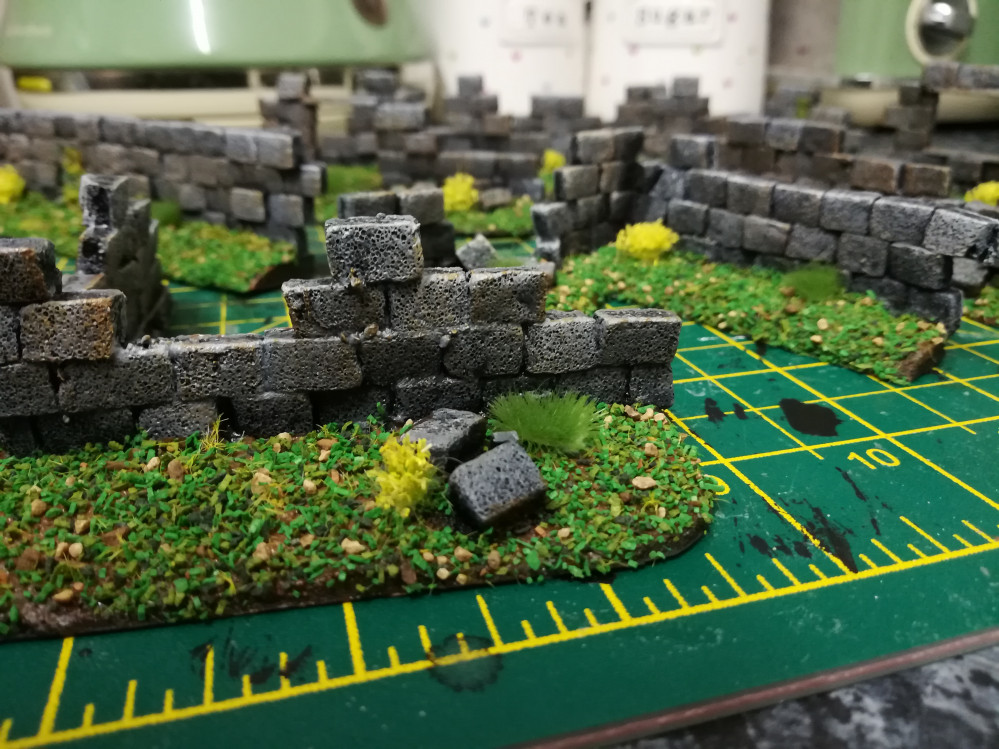
From zero to hero, a terrain journey
Modular (ish) foam brick ruins
Step 0: Tiny foam bricks
n.b. I realise I’m adding these updates back to front a bit; this is my most recent project and I’ll sort of work backwards!
I fancied some ruins to use for the base attack scenario in Burrows and Badgers and also for some general scatter. I loosely followed the Black Magic Craft approach for his modular dungeon walls.
Teeny tiny foam bricks. I painfully cut these out of a sheet of 5mm xps foam that I got for a few quid on ebay (I should put in another order from them actually)
I don’t have a foam cutter or even a try square so I had to do a lot of measuring and checking before cutting anything. My steel ruler and craft knife did the job though- Mostly helped by how thin the foam is really.
My bricks are an irregular 5x5x10mm, irregular because cutting by hand isn’t going to produce perfect results anyway, but they were close enough. A bit of variety in the bricks actually helps give a bit of interest to the piece when finished.
I chucked my bricks in a tub with some stones and rolled it around a bit to take the sharp edges off and leave a bit of texture in the bricks. This worked a treat and didn’t take long at all.
I made a couple of tubs of these one evening without any real plan for them other than finally making a dent in the 8ft sheet of foam in the way in the garage
Step 1: the tiny bricklayer
I used my best tiny bricklaying powers to start building up my walls.
Bases for the pieces were made from 5mm foamcore and cut to 6″ x 2cm (mixed units I know… something that is completely Games Workshop’s fault as when I was growing up I used imperial for all my wargaming and metric for all my school work. To this day I tend to think in mixed units.)
Corner bases were measured to be 3″x3″ along the edge the wall was to be placed, so inner corners and outer corners can be used together and the ‘inside’ of the building has no extra basing protruding.
This means that all walls are multiples of 3″ when arranged so we can build up arbitrary structures of different sizes to represent anything from a large single building to a ruined village or similar.
I included some doorways and windows using coffee stirrers as lintels and windowsills. In retrospect I should have frames the doors and windows more realistically but not to worry.
Bases were textured with PVA, play sand and basing grit.
Step 2: Seal and paint
I’m fuming. I forgot to take any photos of the mod podge and black stage. It makes a brilliant basecoat and the pieces are so much more hardy. Do as Black Magic Craft says on this one; it’s excellent. It also allowed me to repair any bits that hadn’t glued down properly by just sticking them down with the primer. Can’t go wrong.
I painted the pieces up from the primarily with drybrushing. I did four or so brushes of dark grey through to white. For the first couple of layers it was a bit more like an overbrushing but not quite; I still wanted to see some of that black here and there. The white seemed extreme when I did it and I wondered about taking it back down again but I’m glad I didnt.
Next I painted the bases a mix of raw umber and burnt sienna I didn’t go mad here I just kind of slapped it on. The plan was to flock over it anyway so as long as I got a good coverage I was happy. The walls also received a very light drybrush of the raw umber and then burnt sienna. This brought them round from a very cold-looking finish (perfect for frostgrave) to a warmer tone (perfect for my woodland ruins!) – this knocked back a bit of the white and made for a really nice effect.
Step 3: Flocking tufts!
I bought some Army Painter Battlefield XP tufts and meadow flowers the other day so I thought I’d try them out here. The meadow flowers look really nice with proper shaped leaves on the grass tufts but the standalone grass tufts I’m not crazy about. I think in comparison to the static grass I already own they’re a bit flat in colour and plasticy in finish.
For flock I had a big tub made from grit, static grass and different coloured flocks that fell off my MSF game board in a big sheet (!!!) because I made a mess of the gluing stage. I didn’t really want this flock to go to waste – that one tub is probably more expensive than the whole rest of this build.
Since these ruins are designed to be a set it worked out well to use this perculiar mix of colours and textures for their bases so they were nice and uniform. They also pass for a ruins-in-the-wood sort of look which is good.
This part was pretty routine; I slapped on some PVA, shoved the flock all over the place and stuck my flowers and tufts on here and there. In future I may add some white flower tufts to some of them to add a bit of variety to the colours on the ground cover but overall I’m really happy with the aesthetic.









































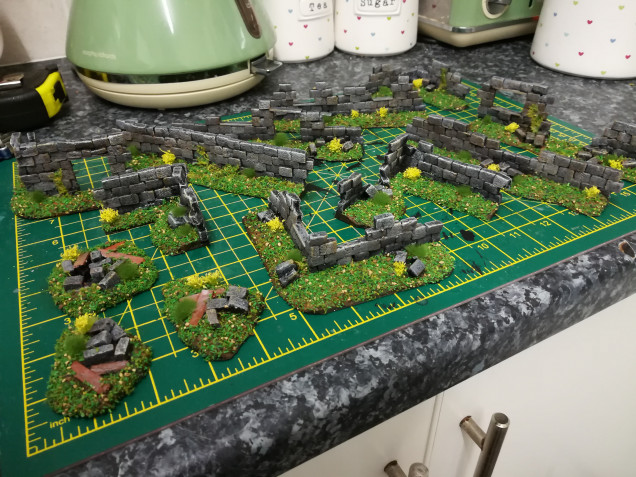

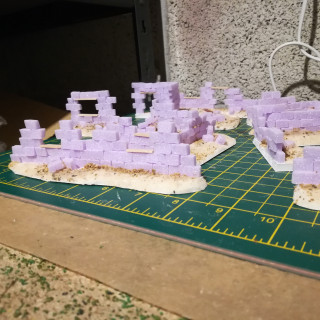
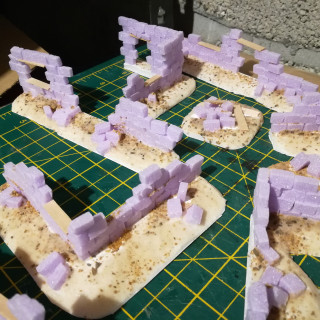
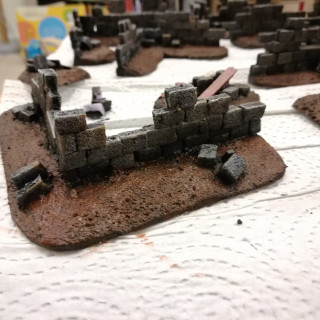
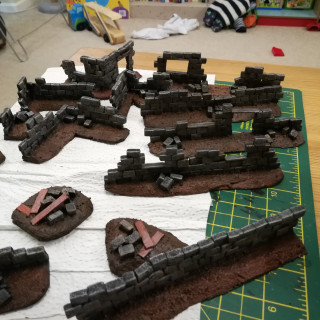
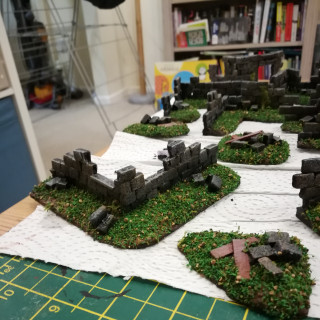
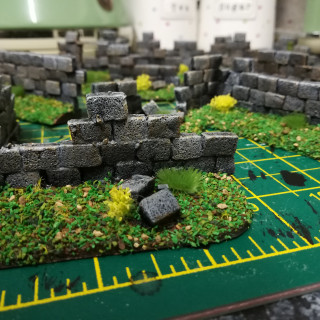
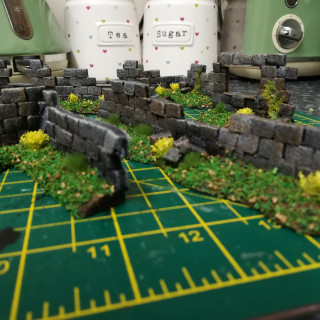

































Really nice work, I must soucre som of the foam to have a play with it
Thanks very much!